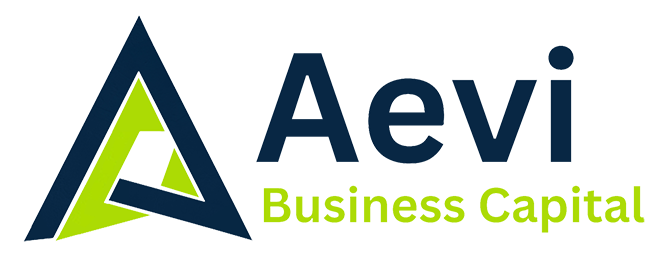
Getting the right equipment is crucial for growing your business. New or better equipment can help you improve productivity, offer new services, and stay competitive. However, buying or leasing new equipment can be expensive. That’s where business funding comes in.
Understanding how to get funding for equipment can make a big difference for your business. Whether you need to purchase machinery, vehicles, or technology, knowing your options and what you need to prepare can save you time and hassle. This article will help you navigate the process of securing the funds you need.
When looking for equipment financing, you have to consider various funding options. You need to understand what lenders are looking for and how to present your business in the best light. Proper preparation and following the right steps can increase your chances of getting the necessary funds. Let’s dive in and explore the steps to get business funding for your equipment needs.
Understanding Equipment Financing
Equipment financing is a type of loan used to purchase or lease business equipment. This funding allows you to spread the cost of expensive equipment over time. It makes acquiring necessary tools more manageable without draining your cash flow.
There are two main types of equipment financing: loans and leasing. With an equipment loan, you borrow the money to buy the equipment and pay it back over time with interest. The equipment becomes yours once you pay off the loan. On the other hand, equipment leasing allows you to rent the equipment for a set period. Once the lease ends, you may have the option to buy the equipment or return it and lease newer models.
One of the benefits of equipment financing is that the equipment itself often serves as collateral. This reduces the lender’s risk, making it easier to get approval even if your credit isn’t perfect. Furthermore, equipment financing can often be obtained quickly, allowing your business to start using the new tools right away.
Best Options for Equipment Funding
When looking for equipment funding, choosing the right source is crucial. Here are some of the best options for securing the funds you need:
1. Traditional Banks
Banks offer equipment loans with competitive interest rates. They typically require strong credit and a good financial history. The application process can be more time-consuming, but banks often provide favorable terms if you qualify.
2. Credit Unions
Credit unions are member-owned institutions that often provide good terms on loans. Their requirements can be more flexible than traditional banks, making them a viable option for businesses that have established a relationship with a credit union.
3. Online Lenders
Online lenders can provide quick and convenient access to equipment loans. These lenders often have faster approval times and less stringent credit requirements compared to traditional banks. However, their interest rates might be higher.
4. Equipment Dealers and Manufacturers
Many equipment dealers and manufacturers offer financing options directly. These deals can sometimes include promotional rates or deferred payment plans, making it easier to get started with new equipment.
5. Small Business Administration (SBA) Loans
The SBA offers loan programs that can be used for equipment financing. These loans typically have low interest rates and long repayment terms but may involve a more detailed application process.
By exploring these options, you can find the best solution to meet your equipment needs. Each source has its own benefits and requirements, so it’s important to choose the one that aligns best with your business situation.
Preparing Your Business for Equipment Financing
Before applying for equipment financing, it’s essential to prepare your business to ensure a smooth process. Proper preparation can increase your chances of getting approved and securing favorable terms.
1. Improve Your Credit Score
Your credit score plays a big role in the approval process. Check your credit report and address any errors. Pay down existing debts and make timely payments to improve your score. A higher credit score can lead to better loan terms and lower interest rates.
2. Gather Financial Documents
Lenders will require various financial documents to assess your business’s health. Prepare your financial statements, including profit and loss statements, balance sheets, and cash flow statements. Having these documents ready can speed up the application process.
3. Create a Solid Business Plan
A detailed business plan demonstrates your ability to manage funds and repay loans. Include projections showing how the new equipment will help increase revenue and efficiency. Clearly outline your goals and how the equipment fits into your overall business strategy.
4. Evaluate Your Current Debts
Lenders will look at your existing debt levels. Evaluate your current obligations and consider paying down some debt before applying for new financing. Lowering your debt load can make your business appear more financially stable.
5. Prepare Collateral
Some lenders may require collateral to secure the loan. Be prepared to offer assets such as property, inventory, or other valuable items. Collateral can reduce the lender’s risk and improve your chances of approval.
Steps to Apply for Equipment Funding
Once your business is prepared, you can begin the application process for equipment funding. Following these steps can help ensure a smooth and successful application.
1. Research and Choose Lenders
Begin by researching potential lenders. Compare their terms, interest rates, and qualification requirements. Choose a lender that offers favorable terms and aligns with your business needs.
2. Complete the Application
Fill out the loan application form carefully. Provide accurate information about your business and the equipment you wish to finance. Double-check for any errors or incomplete sections to avoid delays.
3. Submit Financial Documents
Along with your application, submit the required financial documents. This may include your business plan, financial statements, and tax returns. Organized and complete documentation can make a positive impression on lenders.
4. Communicate with the Lender
After submitting your application, maintain communication with the lender. Be responsive to any additional information requests or questions. Prompt communication can help move your application forward quickly.
5. Review Loan Offers
Once you receive loan offers, review them carefully. Pay close attention to the interest rates, repayment terms, and any fees. Choose the offer that best meets your business needs and offers the most favorable terms.
6. Sign the Loan Agreement
After selecting a loan offer, proceed with the loan agreement. Carefully review all terms and conditions before signing. Ensure you understand your repayment obligations and any potential penalties.
Conclusion
Securing business funding to buy or lease new equipment can be a game-changer for your company. The right equipment can enhance productivity, open up new opportunities, and help you stay competitive. By understanding equipment financing, exploring the best funding options, and preparing your business properly, you can increase your chances of getting the funds you need.
Following a structured application process ensures that you present your business in the best light possible. Thorough preparation and careful research help smooth the path to securing the necessary funding.
Ready to take the next step and get the equipment your business needs? Contact Aevi Consulting today. Our experienced team will guide you through the financing process and help you find the best funding solution. Reach out to Aevi Consulting now and start growing your business.





